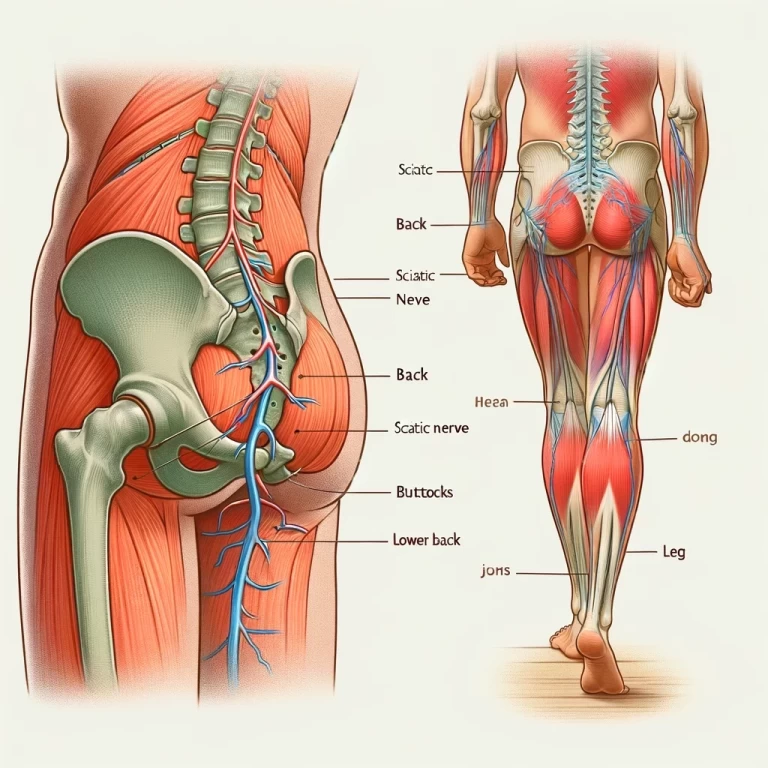
Living with sciatica doesn't have to mean constant pain. Sciatica, characterized by pain radiating along the sciatic nerve, can disrupt daily life significantly. However, with the right strategies and proactive steps, you can alleviate the pain and improve your quality of life. This blog explores how proper posture, stretching routines, ergonomic adjustments, and chiropractic care can help manage and reduce sciatica pain.
Understanding Sciatica
Sciatica is a condition resulting from irritation or compression of the sciatic nerve, which runs from the lower back, through the hips, buttocks, and down each leg. Common symptoms include sharp pain, tingling, numbness, and muscle weakness along the nerve path. Causes range from herniated discs and spinal stenosis to muscle spasms and injuries.
The Importance of Proper Posture
Maintaining proper posture is crucial in managing sciatica pain. Poor posture can exacerbate nerve compression and increase discomfort. Here are some tips for improving posture:
1. Sitting Posture:
- Sit with your feet flat on the floor and knees at a right angle.
- Use a chair with proper lumbar support.
- Avoid crossing your legs to maintain spinal alignment.
2. Standing Posture:
- Stand with your weight evenly distributed on both feet.
- Keep your shoulders back and relaxed.
- Avoid locking your knees.
3. Sleeping Posture:
- Sleep on a firm mattress.
- Try sleeping on your side with a pillow between your knees.
- If you sleep on your back, place a pillow under your knees to reduce lower back strain.
Effective Stretching Routines
Stretching can help relieve sciatic nerve pain by reducing muscle tension and improving flexibility. Incorporate these stretches into your daily routine:
1. Piriformis Stretch:
- Lie on your back with both feet flat on the floor.
- Cross one ankle over the opposite knee and gently pull the bottom leg towards your chest.
- Hold for 30 seconds and repeat on the other side.
2. Hamstring Stretch:
- Sit on the floor with one leg extended and the other bent.
- Reach towards your toes while keeping your back straight.
- Hold for 30 seconds and switch legs.
3. Cat-Cow Stretch:
- Start on your hands and knees.
- Arch your back (cat) and then lower it while lifting your head and tailbone (cow).
- Repeat 10 times to improve spinal mobility.
Ergonomic Adjustments for Relief
Ergonomics plays a vital role in reducing sciatic pain, especially if you spend long hours sitting or standing. Consider these adjustments:
1. Workstation Setup:
- Ensure your chair supports your lower back.
- Position your computer screen at eye level to avoid straining your neck.
- Use an adjustable desk to alternate between sitting and standing.
2. Lifting Techniques:
- Bend at your knees and hips, not your back.
- Hold the object close to your body and lift using your legs.
3. Footwear Choices:
- Wear supportive shoes with good arch support.
- Avoid high heels and flat shoes that lack cushioning.
Chiropractic Care for Sciatica
Chiropractic care is a highly effective method for managing sciatica. Chiropractors specialize in diagnosing and treating musculoskeletal conditions, including sciatica. Here’s how chiropractic care can help:
1. Spinal Adjustments:
- Chiropractors use spinal adjustments to realign the spine, reducing nerve pressure and alleviating pain.
- Regular adjustments can prevent future flare-ups and improve overall spinal health.
2. Physical Therapy:
- Chiropractors may incorporate physical therapy exercises to strengthen the muscles supporting your spine.
- These exercises can improve flexibility, reduce muscle tension, and enhance mobility.
3. Lifestyle Advice:
- Chiropractors offer personalized advice on posture, ergonomics, and daily activities to prevent sciatic pain.
- They can guide you on weight management, as excess weight can increase sciatic nerve pressure.
Additional Tips for Managing Sciatica
1. Regular Exercise:
- Engage in low-impact exercises like walking, swimming, and cycling to keep your muscles active and reduce pain.
- Avoid high-impact activities that can aggravate your condition.
2. Heat and Cold Therapy:
- Apply a cold pack to the affected area for 15 minutes several times a day to reduce inflammation.
- Use a heating pad to relax tight muscles and improve blood flow.
3. Hydration and Nutrition:
- Stay hydrated to keep your spinal discs hydrated and healthy.
- Eat a balanced diet rich in anti-inflammatory foods like fruits, vegetables, and omega-3 fatty acids.
4. Mind-Body Techniques:
- Practice relaxation techniques like deep breathing, meditation, and yoga to manage stress and reduce pain.
- Consider acupuncture or massage therapy for additional relief.
Conclusion
Living with sciatica doesn't have to mean enduring constant pain. By incorporating proper posture, stretching routines, ergonomic adjustments, and chiropractic care into your daily life, you can manage and reduce sciatica pain effectively. Empower yourself with these proactive steps and explore our blog for more actionable advice on managing sciatica. Remember, taking control of your health is the first step towards a pain-free life.
Additional Resources
For further information on sciatica consider visiting these resources:
Mayo Clinic - Sciatica
Cleveland Clinic - Lower Back pain
American Chiropractic Association - Chiropractic Care







Leave a comment